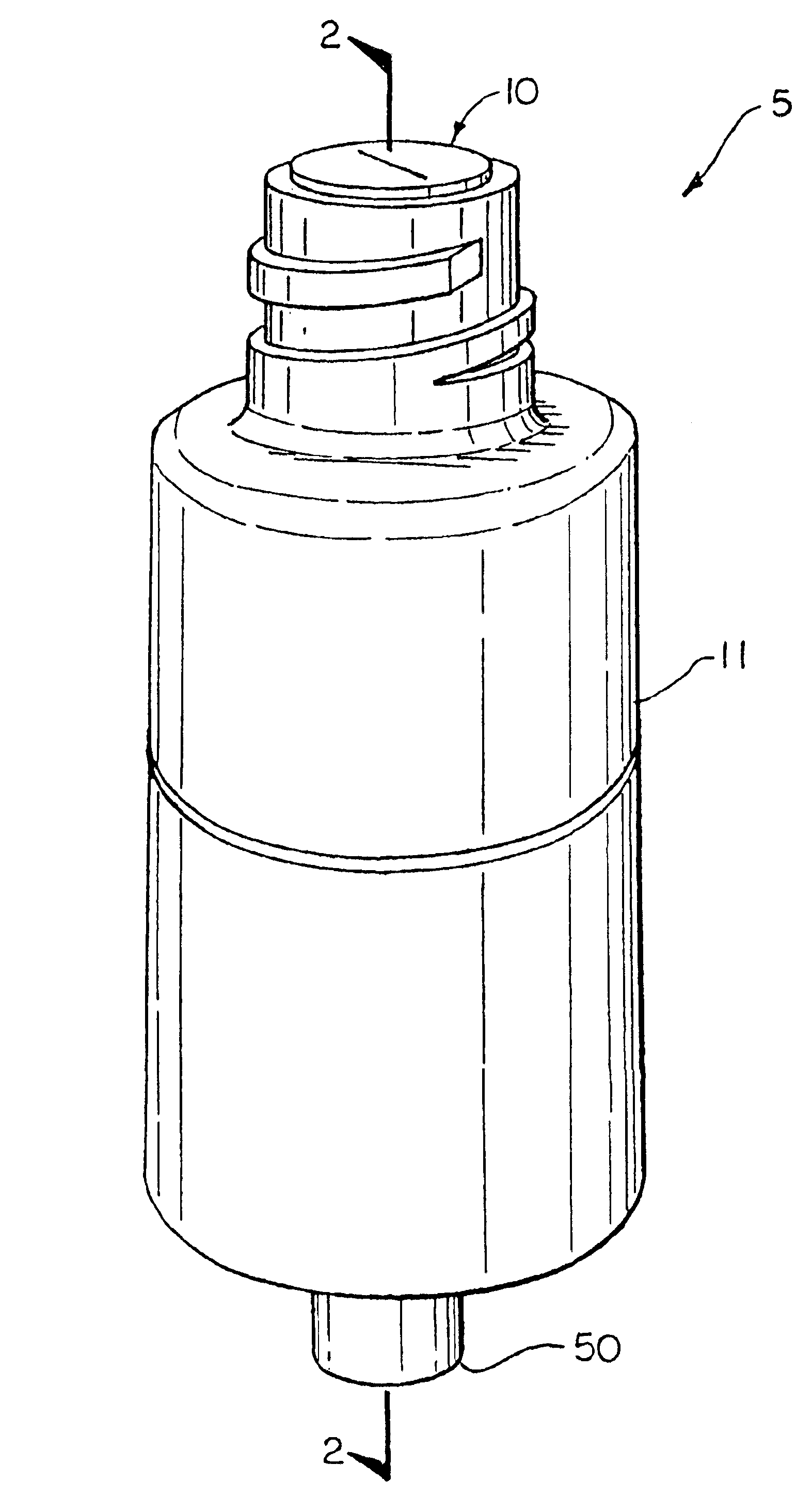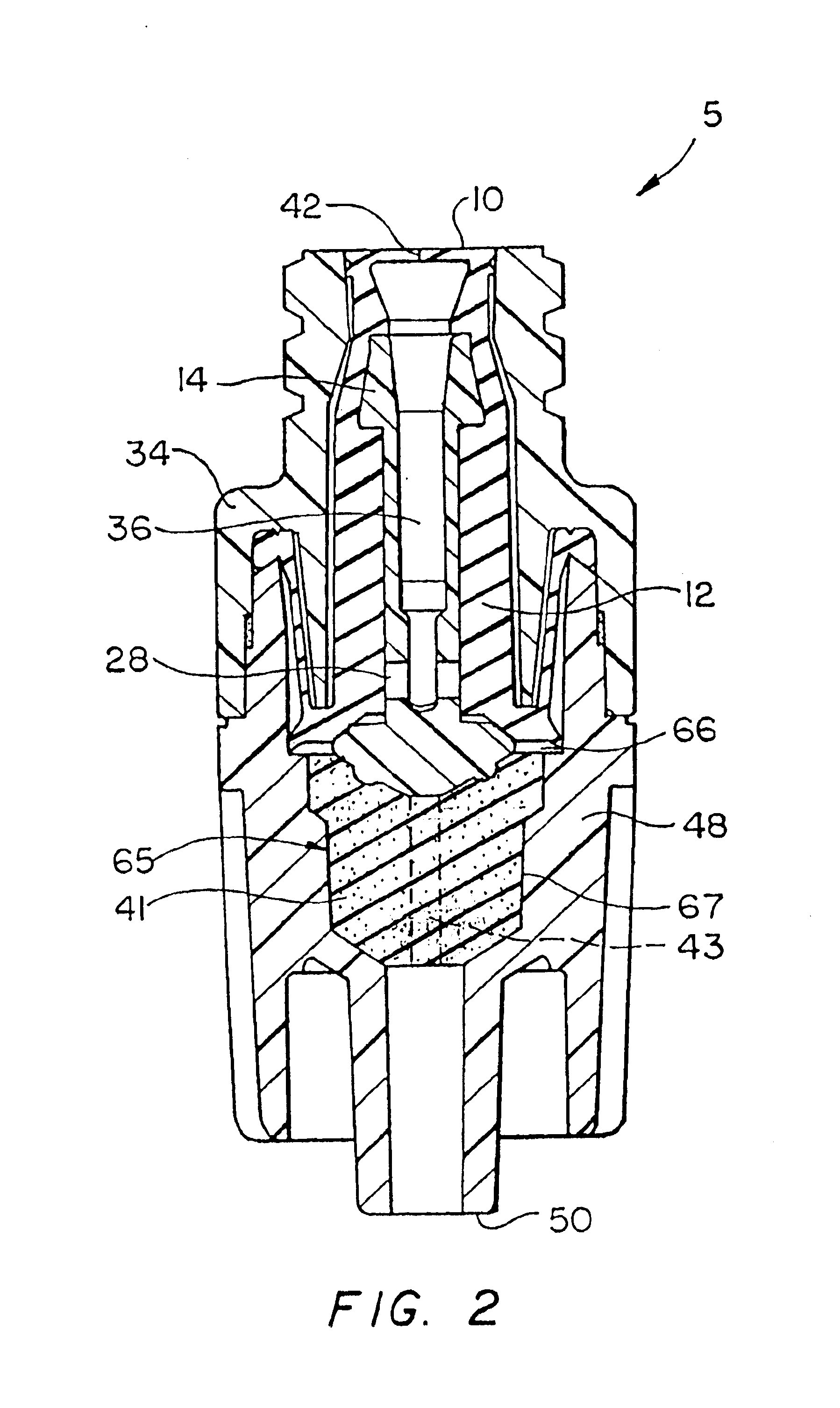Apparatus for reducing fluid drawback through a medical valve
a technology of medical valves and apparatus, which is applied in the field of medical products, can solve the problems of blood leakage proximally into various parts of the valve, compromising affecting the sterility of the valve, so as to reduce the potential for fluid drawback
- Summary
- Abstract
- Description
- Claims
- Application Information
AI Technical Summary
Benefits of technology
Problems solved by technology
Method used
Image
Examples
first embodiment
[0026]FIG. 2 schematically shows a cross-sectional view of the medical valve 5 shown in FIG. 1 along line 2—2. Among other things, the valve 5 includes an inlet housing portion 34 having the proximal port 10, an outlet housing portion 48 having the distal port 50, a stretchable and compressible gland 12 secured between the inlet housing 34 and outlet housing 48, and a rigid, longitudinally movable cannula 14 secured within the valve 5 by the gland 12. The cannula 14 forms a cannula flow channel 36 terminating at a transverse channel 28 that normally is occluded by the gland 12. In addition, the outlet housing 48 forms a chamber 65 having a volume that changes as the cannula 14 is urged proximally and distally by a nozzle.
[0027]Insertion of a nozzle against a slit 42 at the proximal end of the gland 12 causes the cannula 14 to move distally, thereby moving the transverse channel 28 from its occluding contact with the gland 12. Liquid then may be directed first through the cannula cha...
second embodiment
[0035]FIG. 4 shows a cross-sectional view of the valve 5 shown in FIG. 1. In this embodiment, the outlet housing portion 48 is reconfigured to have an orthogonal outlet 100 for directing fluid from the valve 5, and an end cap 102 at its distal end. Further unlike the embodiment shown in FIG. 1, the compressible member 41 is in the form of a hollow cylinder having a closed top portion, and an open bottom portion (FIG. 5A). In particular, the top portion comprises a top surface 104 having a depression 106 for receiving the bottom portion of the cannula 14. The bottom portion includes an annular flange 108 for securing the compressible member 41 within the valve 5 (discussed below). The compressible member 41 may be manufactured from any material used in the art, such as silicone, latex, or plastic, that can compress and decompress without significantly affecting its overall structure.
[0036]As shown in FIG. 4, the compressible member 41 is free standing within the chamber 65. According...
PUM
 Login to View More
Login to View More Abstract
Description
Claims
Application Information
 Login to View More
Login to View More - R&D
- Intellectual Property
- Life Sciences
- Materials
- Tech Scout
- Unparalleled Data Quality
- Higher Quality Content
- 60% Fewer Hallucinations
Browse by: Latest US Patents, China's latest patents, Technical Efficacy Thesaurus, Application Domain, Technology Topic, Popular Technical Reports.
© 2025 PatSnap. All rights reserved.Legal|Privacy policy|Modern Slavery Act Transparency Statement|Sitemap|About US| Contact US: help@patsnap.com



